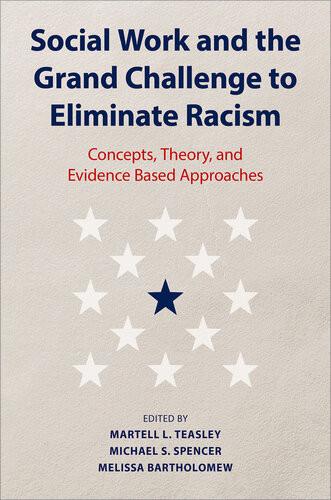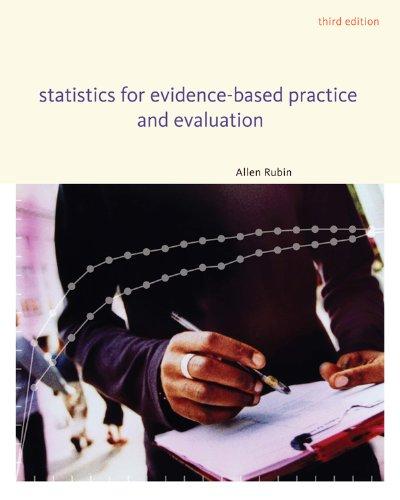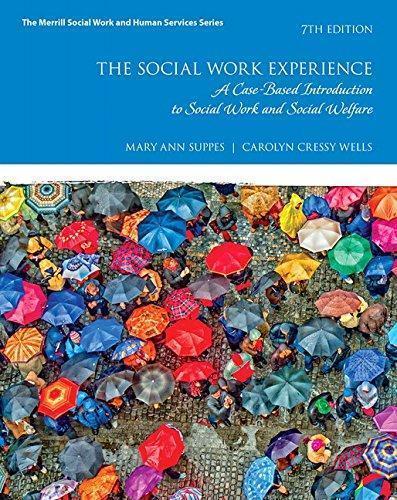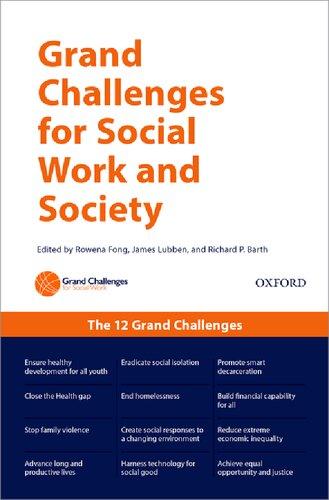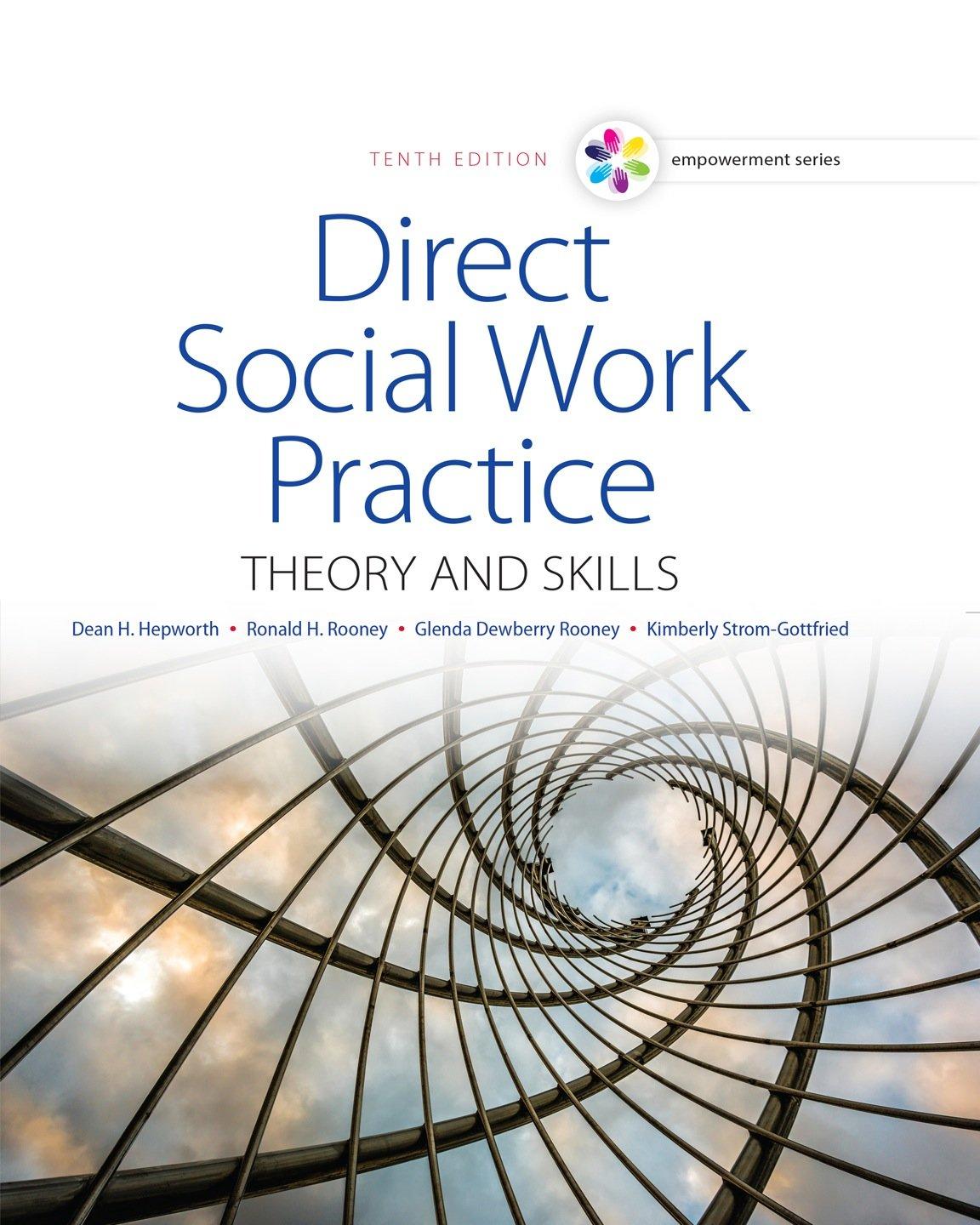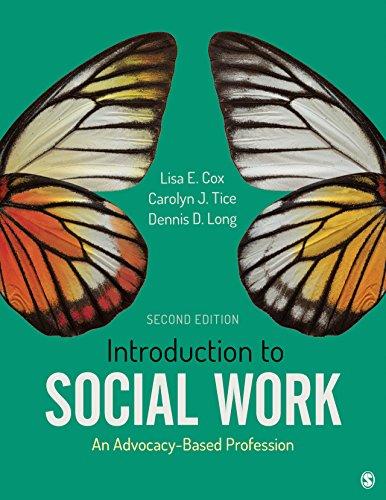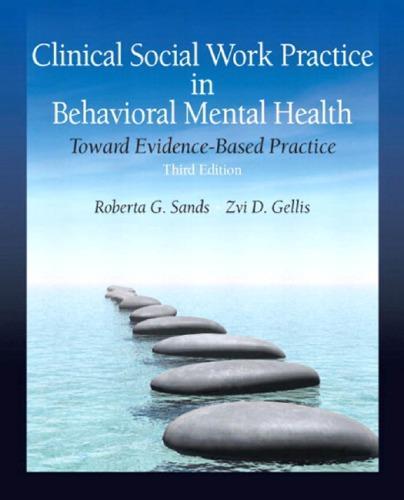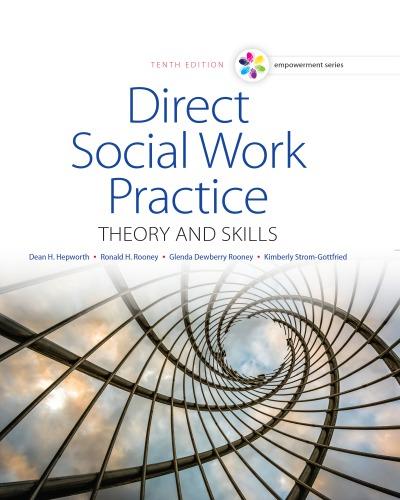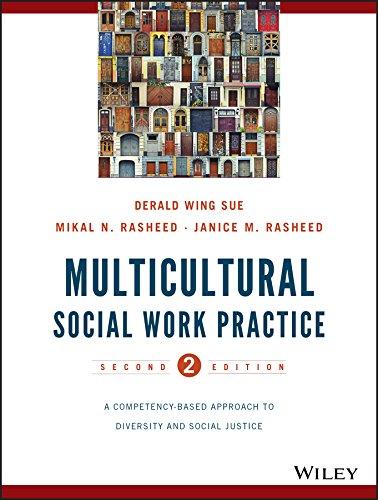Social Work and the Grand Challenge to Eliminate Racism
Concepts, Theory, andEvidence BasedApproaches
Editedby MARTELL L. TEASLEY, MICHAEL S. SPENCER, AND MELISSA
BARTHOLOMEW
Oxford University Press is a department of the University of Oxford. It furthers the University’s objective of excellence in research, scholarship, and education by publishing worldwide. Oxford is a registered trade mark of Oxford University
Press in the UK and certain other countries.
Published in the United States of America by Oxford University Press 198 Madison Avenue, New York, NY 10016, United States of America.
© Oxford University Press 2023
All rights reserved. No part of this publication may be reproduced, stored in a retrieval system, or transmitted, in any form or by any means, without the prior permission in writing of Oxford University Press, or as expressly permitted by law, by license, or under terms agreed with the appropriate reproduction rights organization. Inquiries concerning reproduction outside the scope of the above should be sent to the Rights Department, Oxford University Press, at the address above.
You must not circulate this work in any other form and you must impose this same condition on any acquirer.
Library of Congress Cataloging-in-Publication Data
Names: Teasley, Martell L., editor. | Spencer, Michael S., editor. | Bartholomew, Melissa, editor.
Title: Social Work and the Grand Challenge to Eliminate Racism : concepts, theory, and evidence based approaches / Edited by Martell L. Teasley, Michael S. Spencer, Melissa Bartholomew.
Description: New York : Oxford University Press, [2023] | Includes bibliographical references and index.
Identifiers: LCCN 2022053631 (print) | LCCN 2022053632 (ebook) | ISBN 9780197674949 (hardback) | ISBN 9780197674963 (epub) | ISBN 9780197674970
Subjects: LCSH: Racism. | Social service and race relations. | Minorities—Civil rights.
Classification: LCC HT1521 .S543 2023 (print) | LCC HT1521 (ebook) | DDC 305.8—dc23/eng/20221208
LC record available at https://lccn.loc.gov/2022053631
LC ebook record available at https://lccn.loc.gov/2022053632
DOI: 10.1093/oso/9780197674949.001.0001
Racismisagrandchallengeforthesocialworkprofessionbecause theprofessionhasnevertackledthecentralityofracismasacausal factor,precipitatingproblemformationinthelivesofpeople.
—MartellL.Teasley
Contents
Contributors
Introduction
RacismandSociety
RaceandSocialOutcomes
TheGoalofThisBook
TheChallengeofEliminatingRacism
PART I. HISTORY, RACISM, AND SOCIAL WORK EDUCATION
1. The Meaning and Function of Race and Racism: A Conceptual Understanding
MartellL.Teasley
The Meaning and Function of Race and Racism
Racism
Institutional Racism
Systemic Racism
Racial Projects
Racializing People
Racialized Identity
Racial Commonsense Thinking
Conclusion
2. Anti-Racism Social Work: History and Future Challenges
MartellL.Teasley
Social Work and Racism
Racism in Early Social Work
Racism and Civil Rights
Racism, Diversity, and Social Work Education
Racism and Social Work
Anti-Racist Social Work
ASWB and Racially Biased Licensure Testing
Conclusion
3. Using Personal-Professional Narratives as a Technique for Teaching: Social Work Students about the Complexities of Racism
TracyR.Whitaker,RubyM.Gourdine,andRobertL.Cosby,Jr .
Racism in the Helping Relationship
Challenges in Discussing Racism with Social Work Students
Use of Personal-Professional Narratives
Personal-Professional Narrative Case Study
Juvenile Court Experience
Child Welfare Agency
Evaluating Outcomes
Implications for Practice
Summary and Conclusion
4. Eradicating Racism: Social Work’s Most Pressing Grand Challenge
AbrilN.Harris,SmithaRao,ManuelCano,BongkiWoo,Ty Tucker,DaleDagarMaglalang,andMelissaWoodBartholomew
Conceptualization of Racism
Racism and the History of Social Work
Social Work’s Efforts to Eradicate Racism
Intrapersonal Efforts to Eradicate Racism
Interpersonal Efforts to Eradicate Racism
Institutional Efforts to Eradicate Racism
Conclusion
5. Ending Racism: A Critical Perspective
HaroldE.BriggsandMartellL.Teasley
The Sustainability of Racism in America
Racism by Legislative Fiat and De Jure
Building a Race Consciousness-Raising and Anti-Racism Practice and Theory Narrative
Structural and Policy Approaches to Anti-Racism Practice
Practice Approaches for Addressing Structural and Interpersonal Racism
Behavioral Approach to Understanding Racism and Racial Prejudice
Mindfulness and Anti-Racism Practice
Combined Practice Approaches for Reducing Racism
Addressing Racial Discrimination through Task-Centered Practice
Confronting the Denial of Racism
Anti-Racism and Anti-Oppression Practice
Critique of Anti-Racism and Anti-Oppressive Practice
Perspectives
Conclusion
PART II. RACISM AND INDIVIDUAL AND FAMILY WELL-BEING
6. Ensure Healthy Development for Youth: Expansions and Elaborations for Equity
ValerieB.Shapiro,AmeliaSeraphiaDerr,NehalEldeeb,Henrika McCoy,MiguelA.Trujillo,andCucT.Vu
In Matters of Equity, Creating Change Does Not Necessarily Create Progress
Re-examining UnleashingthePowerofPreventionfor Equity Elaborations
In Matters of Equity, Aspirations and Intentions Are Insufficient Re-examining the Goal to Establish Equity-Enhancing Interventions
Understanding the Effects of Tested Programs on Marginalized Groups
Case Example: An Equity-Enhancing Approach to Program Adaptation and Implementation
Equity-Enhancing Interventions Prioritize Participatory Processes
Equity-Enhancing Interventions Are Tailored to Particular Cultures, Contexts, and Conditions
Equity-Enhancing Interventions Innovate Delivery Methods to Improve Service
Can Unleashing Prevention Be Anti-Racist?
7. Ensuring Healthy Development for All Youth: Prevention of Psychosis
MelissaE.Smith,PamelaRakhshanRouhakhtar,andJason Schiffman
The Promise of Prevention for All?
Overview of Early Psychosis Prevention
The Grand Challenge of Preventing Serious Mental Illness
The Promise of Prevention: An Update
Setting the Stage: Race and Mental Illness
Brief History of the Social Construction of Mental Illness and Race
Current Racial and Ethnic Disparities in the Identification and Treatment of Serious Mental Illness
Role of Structural and Individual Racism in Mental Healthcare
A Mirror Image? Racial and Ethnic Disparities in Psychosis Prevention
Structural Racism, Racial Bias, and Cultural Responsiveness in Assessing Youth for Psychosis Risk
Are Promising Evidence-Based Practices for Psychosis Prevention Racially and Culturally Responsive? Strategies for Reducing Structural Racism and Racial Bias and Increasing Cultural Responsiveness: Implications for Social Work Research, Education, and Practice
Development of Racially and Culturally Responsive EvidenceBased Practices
Service Provision: Helping Family and Youth Unleash Their Power
Summary
8. Closing the Health Gap: Addressing Racism, Settler Colonialism, and White Supremacy
MichaelS.Spencer,SantinoG.Camacho,BongkiWoo,RobertoE. R.Orellana,andJessicaI.Ramirez
A Holistic View of Health
The Association between Racism and Settler Colonialism, and Physical and Mental Health
Eliminating Racism in Health Systems
Health Service Delivery
Workforce Development
Health Information Systems
Equitable Access
Financing Systems
Leadership and Governance
Culturally Relevant Health-Promotion Interventions to Reduce Exposure to Racism
Racial Healing
Cultural Coping and Cultural Resilience
Culturally Tailored and Culturally Grounded Interventions
Toward Solutions and Reconciliation
Conclusion
9. Integrating AASWSW’s Grand Challenges of Productive Aging with Anti-Racism and Health Equity Lenses to Improve
Population Health
ErnestGonzales,NancyMorrow-Howell,JacquelineL.Angel,Lisa Fredman,LisaA.Marchiondo,RobertHarootyan,JasminChoi, NandiniChoudhury,KelsiCarolan,KathyLee,ErwinTan,Patricia Yu,EmilyShea,CliffWhetung,andChristinaMatz
An Integrated Framework of Productive Aging, Anti-Racism, and Health Equity
Definitions
Public Policy, Culture, and Discrimination
Individual Capacity
Neighborhood Capacity
Institutional Capacity
Productive Activities
Outcomes among Older Adults
Outcomes for Families, Organizations, and Society
Contributions of an Integrated Framework
Progress to Date and Future Research
Implications for Education
Conclusion
10. Racism and the Grand Challenge of Ending Family Violence among Black Families
AlanJ.Dettlaff,ReikoBoyd,andTriciaBent-Goodley
Black Families and Child Maltreatment
Black Families and Intimate Partner Violence
Historical Overview of Racism and Violence against Black Families
Forced Family Separation
Laws and Policies to Maintain White Supremacy
The Role of Racism in Creating and Perpetuating Risk for Family Violence
Racism and Poverty
Racism, Health, and Stress
Racism, Geographic Contexts, and Structural Inequities
Evidence-Based and Evidence-Informed Strategies for Ending Family Violence
Applying an Anti-Racist Framework to Violence Prevention
11. Beyond Colorism: The Impact of Racialization in U.S. Latinxs
RocíoCalvo,JandelCrutchfield,andJorgeDelva
Healthcare
Housing
Education
Criminal Justice
Promising Practices to Counteract the Impact of Racism on Latinxs
Conclusion
12. Confronting the History of Racism against Asian Americans in the United States
MeirongLiu
Introduction
Asian Americans and Historical Experiences of Othering
Impact of Racism on the Health and Mental Health of Asian Americans
Anti-Asian Racism and the Grand Challenges for Social Work
Moving Forward: Strategies to Eliminate Anti-Asian Racism
Disentangling the Model Minority Myth
Fostering Racial Solidarity
Reflecting Racism within the Social Work Profession and Developing an Anti-Asian Racism Workforce
Support Reporting and Bystander Intervention Training
Policy Initiatives on Anti-Asian Racism
The Importance of Community-Based Solutions
Addressing Access to Mental Healthcare
Culturally Sensitive Evidence-Based Intervention
Directions for Future Anti-Asian Racism Research
Conclusion
PART III. ELIMINATING RACISM THROUGH STRENGTHENING THE SOCIAL FABRIC
13. Strengthening the Social Responses to the Human Impacts of Environmental Change
RachelForbes,DorlisaJ.Minnick,AmyKrings,FeliciaM.Mitchell, SamanthaTeixeira,andShanondoraBilliot
Chapter Overview
Intersection of Health Equity and Environmental Justice
Pesticide Exposure
Food Systems and Food Security
Water
Extractive Energy and Natural Resource Development
Extreme Weather Events
Urban Heat Islands (UHI)
Tornadoes
Hurricanes and Flooding
Climate Migration
COVID-19
Air Quality
Food Systems
Water
Activism and Advocacy
Conclusion and Moving Forward
14. Race and Racism in the Homelessness Crisis in the United States: Historic Antecedents, Current Best Practices, and Recommendations to End Racial Disparities in Housing and Homelessness
DeborahK.Padgett,BenjaminF.Henwood,andJamesPetrovich
Foreword: A Brief Comment on the Authors’ Positionality
Racism in Plain Sight: From Slavery to Jim Crow to Post–World War II Housing Exclusion
Research on Homelessness: The Missing Significance of Race
Current Best Practices in Ending Homelessness: Housing First
The HUD-VASH Program for Homeless Veterans: A Rare Success
Story and Lessons Learned
African Americans among Homeless Veterans
The Success of HUD-VASH
Structural and Institutional Changes Needed to Address Racial Inequities in Housing Access and Housing Security
Conclusion and Recommendations
15. Eradicating Social Isolation: Focus on Social Exclusion and Racism
SandraEdmondsCrewe,ClaudiaThorne,andNatalieMuñoz
Introduction
Social Isolation and Social Exclusion
Social Isolation
Social Exclusion
Theories: Racism and Social Exclusion
Critical Race Theory
Intersectionality
Racialized Organizations Theory
Social Exclusion, Stigma, and Racism
Relationship of Racism to Social Exclusion and Stigma
Income and Wealth
Education
Physical and Mental Health Outcomes
Case Vignettes (Racism and Social Exclusion)
Case Vignette # 1: Ms. Jones
Case Vignette #2: Julissa
Case Vignette #3: Michael
Conclusion: The Way Forward
PART IV. PROGRESSIVE APPROACHES TO ELIMINATING
INSTITUTIONAL, SOCIAL POLICY, AND ECONOMIC RACISM
16. Juvenile Justice for Achieving Equal Opportunity and Justice
SusanA.McCarter,Bo-KyungElizabethKim,PatriciaLoganGreene,andVanessaDrew
Juvenile Justice and Delinquency Prevention Act
Disparate Impacts of Juvenile Justice System Involvement
Micro-Level Impacts
Meso-Level Impacts
Macro-Level Impacts
Assessing Racial and Ethnic Disparities in Juvenile Justice
Reducing Racial and Ethnic Disparities in Juvenile Justice
Conclusion and Implications
17. From Mass Incarceration to Smart Decarceration
SusanA.McCarter,CamilleR.Quinn,CharlesH.Lea,III,and LauraS.Abrams
Mass Incarceration
Racial and Ethnic Disparities in the Criminal Justice System
Promote Smart Decarceration Grand Challenge
Micro, Meso, and Macro Contributors to RED
Micro Factors
Meso Factors
Macro Factors
Strategies to Redress Racial and Ethnic Disparities in the Criminal Justice System
Increase the Availability of and Access to Culturally Congruent
Reentry Programs
Address Collateral Consequences through Racial and Ethnic Equity-Informed Policies and Practices
Decriminalize Low-Level Offenses and Invest in Alternatives to Incarceration
Repeal Racialized Criminal Justice Legislation and Policies
Adopt Racial Impact Statements as a Policy Priority
Address Explicit and Implicit Bias along the Carceral Continuum
Conclusion/Implications
18. Reducing Racialized Barriers to School Success for All Children and Youth
TerenceDwightFitzgerald,MartellL.Teasley,TashaSeneca Keyes,andSchnaviaHatcher
Race, Gender, and Disproportionality in School Suspension and Expulsion
Potential Outcomes of School Suspension and Expulsion
Existing Approaches for Tackling Disproportionality
Current Approaches
Launching the School Success Project (SSP)
Collaboration and Capacity-Building
Utilizing Evidence-Based and Innovative Methods
Completing the Interactive Map
Developing a Dissemination Strategy
Conclusion
19. Reversing Extreme Inequality: The Legacy and Persistence of Racism Economic Inequality
TrinaR.Shanks,JenniferRomich,StephanieC.Boddie,Laura Lein,andDominiqueS.Crump
The Legacy and Persistence of Racism: Implications and Possibilities for Extreme Economic Inequality
The Significance of the Racial Income and Wealth Gaps
The History of Exclusionary Policies in the United States
Native Americans
Black Americans
Latinx/Hispanic
Asian Americans
White Americans
Labor and Income
Assets and Wealth
Land Loss
Wealth Stripping through Fees and Fines
Policy to Mitigate Economic Inequality by Race
Reparations
What Can Social Workers Do?
Conclusion
20. White Supremacy and American Social Policy: Implications for Racism-Centered Policy Practice
JeromeH.Schiele,DeniseMcLane-Davison,andChristopher Maith,Sr .
The Reluctance to Address White Supremacy
White Supremacy’s Foundation
Social Policy as Racial Regulation
The Denial of Racism
Policy Practice to Address White Supremacy
Policy Practitioner Roles
Racism-Centeredness in a Social Welfare Policy Course
Womanist Pedagogy and Racism-Centeredness Course Assignments
Congressional Black Caucus Foundation (CBCF) Annual Conference
Conclusion
21. Policy, Practice, and Institutional Barriers to Financial Capability and Asset Building Related to Race (Racism) in the United States
JennyL.Jones,JulieBirkenmaier,LissaJohnson,GenaG. McClendon,YunjuNam,JinHuang,andEyitayoOnifade
The Economics of Racism
The Challenges of Economics and Race/Racism
Race and Financial Education
Financial Socialization
Financial Education
For example, some schools
Financial Guidance
Impacts of Financial Education on Financial Behaviors and Well-Being
Race and Household Financial Access
Basic Financial Access: Banked Status
Alternative Financial Service (AFS) Use
Policy and Practice Suggestions to Increase Rate of Banked
Products and Services Use
Credit Reports, Credit Scores, and Credit Use
Policy and Practice Suggestions Regarding Consumer Credit
Retirement Savings
Policy and Practice Suggestions Regarding Retirement Accounts
Racism as a Barrier to Achieving Financial Capability and Asset
Building for All
Racial Wealth and Disparity
Race and FCAB and Social Work Education
Conclusion
Index
Contributors
Laura S. Abrams, PhD, MSW, University of California, Los Angeles
Jacqueline L. Angel, PhD, MA, University of Texas, Austin
Melissa Wood Bartholomew, PhD, JD, MDiv, MSW, Center for Diversity, Inclusion, & Belonging, Harvard Divinity School
Tricia Bent-Goodley, PhD, MSW, Professor Emeritus, Howard University
Shanondora Billiot, PhD, MSW, University of Illinois
Julie Birkenmaier, PhD, MSW, LCSW, St. Louis University
Stephanie C. Boddie, PhD, MSW, Baylor University
Reiko Boyd, PhD, MSW, University of Houston
Harold E. Briggs, PhD, AM, University of Georgia
Rocio Calvo, PhD, MA, Boston College
Santino G. Camacho, MPH, University of Washington
Manuel Cano, PhD, MSW, Arizona State University
Kelsi Carolan, PhD, MSW, University of Connecticut
Jasmin N. Choi, BSW, Boston University
Nandini Choudhury, MSW, LCSW, MPH, Center for Innovation in Social Work and Health, Boston University
Robert L. Cosby, PhD, MSW, Jr, Howard University
Sandra Edmonds Crewe, PhD, MSW, Howard University
Dominique S. Crump, LLMSW, University of Michigan
Jandel Crutchfield, PhD, MSW, University ot Texas at Arlington
Jorge Delva, PhD, MSW, Boston University
Amelia Seraphia Derr, PhD, MSW, Seattle University
Alan J. Dettlaff, PhD, MSW, University of Houston
Vanessa Drew, EdD, LSW, Elon University
Nehal Eldeeb, University of California, Berkeley
Terence Dwight Fitzgerald, PhD, EdM, MSW, Council for Mental Wellbeing
Rachel Forbes, MSW, University of Denver
Lisa Fredman, PhD, MSPH, Boston University
Ernest Gonzales, PhD, MSSW, New York University
Ruby M. Gourdine, DSW, MSW, Howard University
Robert (Bob) Harootyan, MA, MS, University of North Carolina, Wilmington
Abril N. Harris, PhD, MSW, University of Washington
Schnavia Hatcher, PhD, MSW, University of Alabama
Anna Hayward, PhD, MSW, State University of New York, Stonybrook
Benjamin F. Henwood, PhD, MSW, LCSW, University of Southern California
Jin Huang, PhD, MSW, St. Louis University
Lissa Johnson, MBA, MSW, LCSW, Washington University, St. Louis
Jenny L. Jones, PhD, MSW, Clark Atlanta University
Tasha Seneca Keyes, PhD, MSW, California State University San Marcos
Bo-Kyung Elizabeth Kim, University of Southern California
Amy Krings, PhD, MSW, Loyola University Chicago
Charles H. Lea, III, PhD, MSW, University of Houston
Kathy Lee, PhD, MSW, University of Texas at Arlington
Laura Lein, PhD, MA, University of Michigan
Meirong Liu, PhD, MS, LLM, Howard University
Patricia Logan-Greene, University of Buffalo
Dale Dagar Maglalang, PhD, MA, MSW, Brown University
Christopher Maith, Sr, PhD, MBA, Morgan State University
Lisa A. Marchiondo, PhD, University of New Mexico
Christina Matz, PhD, MSW, Boston College
Susan A. McCarter, PhD, MSW, MS, University of North Carolina, Charlotte
Gena G. McClendon, PhD, ML, Washington University, St. Louis
Denise McLane-Davison, PhD, MA, Toronto Metropolitan University
Dorlisa J. Minnick, PhD, MSW, Shippensburg University
Felicia M. Mitchell, PhD, MSW, Arizona State University
Nancy Morrow-Howell, PhD, Washington University, St. Louis
Natalie Muñoz, PhD, MSW, Howard University
Yunju Nam, Ph.D., MSW, University of Buffalo
Eyitayo Onifade, PhD, MSW, Clark Atlanta University
Roberto E. R. Orellana, PhD, MPH, MSW, University of Washington
Deborah K. Padgett, PhD, MPH, MA, New York University
James Petrovich, PhD, LCSW, Texas Christian University
Meredith Powers, PhD, MSW, University of North Carolina, Greensboro
Camille R. Quinn, PhD, LCSW, LISW-S, University of Michigan
Jessica I. Ramirez, PhD, MSW, MPH, University of Washington
Smitha Rao, PhD, MA, The Ohio State University
Jennifer Romich, PhD, MA, University of Washington
Pamela Rakhshan Rouhakhtar, PhD, University of Maryland, Baltimore County
Jerome H. Schiele, DSW, MSW, Morgan State University
Jason Schiffman, PhD, MA, University of California Irvine
Trina R. Shanks, PhD, MSW, University of Michigan
Valerie Shapiro, PhD, University of California Berkeley
Emily Shea, MSW, MPH, City of Boston
Melissa E. Smith, PhD, MSSW, University of Maryland
Michael S. Spencer, PhD, MSSW, University of Washington
Erwin Tan, MD, Research & International Affairs Director, AARP Thought Leadership
Martell L. Teasley, PhD, MSW, University of Utah
Samantha Teixeira, PhD, MSW, Boston College
Claudia Thorne, PhD, LISW, LCSW, Coppin State University
Miguel A. Trujillo, PhD, LCSW, University of Denver
Ty Tucker, PhD Candidate, MSW, Boston College
Cuc T. Vu, City of Seattle
Cliff Whetung, PhD Candidate, MSW, NYU Silver School of Social Work
Tracy R. Whitaker, PhD, MSW, Howard University
Bongki Woo, PhD, MSW, University of South Carolina
Patricia Yu, Ph.D, LCSW, Executive Office of Health and Human Services at the Commonwealth of Massachusetts
Introduction
The Grand Challenges for Social Work (GCSW) have galvanized the profession, serving as a catalyst for change in bridging collaborative, scholarly, and public initiatives with innovative approaches, backed by science, to tackle long-standing and seemingly intractable social welfare problems. Launched in 2015 as a 10-year project, the American Academy of Social Welfare GCSW selected 12 initial concept papers under three domains. A plethora of consortiums, forums, conferences, workshops, webinars, advocacy efforts, and policy initiatives continue to take place, along with special journal editions, books, and research articles, all dedicated to the GCSW. Additionally, social work education programs have integrated the GCSW into curricula and instruction, university programs, and faculty-led initiatives.
While acknowledging the growing success of the GCSW, voices from within the social work profession questioned the glaring absence of racism as a central focus for the initiative. Although many of the scholarly papers that make up the Grand Challenges underscore the need to include race and discrimination as variables, the distinctiveness of racism as an overarching and casual factor is not captured within the initial set of concept papers. Native American scholars were particularly concerned about a lack of acknowledgment of their plight as First Nation, Indigenous people, and the recognition of their continuous struggle for human rights, anti-oppressive practices, and sovereignty. As voices grew, the topic gained the attention of the Grand Challenges Executive Committee, who then facilitated a discussion to consider the possible integration of racism as a new Grand Challenge. For some, the pervasiveness of racism is viewed as a nearly impossible task for the social work profession to tackle. For others, the idea of generating a set of
Grand Challenges for the profession is incomplete without specific attention to racism as a root cause of oppression and inequality. From another perspective, the social work profession’s signature value of social justice is obviously linked to the need for racial justice, and thus, there were calls for the integration of racism within all of the Grand Challenges, from a sort of metatheoretical perspective; that is, as a formal system that describes the many structural problems and outcomes related to race and racism in society. In some ways, this would mean sprinkling race and racism among the Grand Challenges, which could be meaningful, but would not be enough. Such an approach is good as a method of understanding the veracity of racism and its manifestations across social problems. Yet, it neglects the centrality of racism as a causal factor impacting the lives of people.
To think critically, based on what we know about the malleability of race and racism, all of these perspectives have merit and become points of departure in attempts to comprehend the veracity of racism. However, there are also those who contend that “[b]ecause race is socially constructed, all cultural and experiential products from a racial perspective remain suspect” (Curry, 2017, p. 5). From this position, any search for racial narratives and meaning to explain social experiences and outcomes is a search for racial reification. Thus, race consciousness is problematized and rejected as unproven prima facie and narrow thought (Curry, 2017). However, this position neglects to honestly examine the centrality of racism and denies the real and meaningful experience of racialized people as personified throughout history and contemporary times, along with its omnipresent collate, racism (see Chapter 1). Nor will such an approach garner meaningful changes in the lives of people who intentionally and unintentionally are victims of racialized thoughts and practices. It is important to understand how the malleability of White supremacy and racism took hold in different forms and systems of materializing racial practices in North America, South America, Europe, and the Netherlands (Reid-Merritt, 2017). For this reason, “definitions and perceptions of race are complex, confusing, contradictory, controversial and imprecise”; but they continue to be
used as a classification system of groups around the world (ReidMerritt, 2017, p. 5). Race and racism are the only way in which people can situate certain lived experiences and their outcomes. The deleterious effects of racism are not on the margins of the lived experience of people and groups, and therefore, approaches to eliminating racism cannot be on the margins or serve as a secondary social problem.
In the United States, although the Black and White binary of racism continues, the growing significance of race and racism within and between all racial and ethnic groups demands greater attention by the social work profession. Laws and customs that disavow overt racism have given way to more complex and covert forms of racism, including the complexities of structural inequalities. Thus, any study of racism at one point in time must take into consideration the fluidity and flexibility of racism to morph into varied institutional and structural forces within society (Omi & Winant, 2015). And we cannot forget the benefactor of racism: whiteness. While there is nothing wrong with being a White person, benefiting from whiteness is a form of silent complicity seldom discussed. The historical problem is that whiteness has been based on skin color, certain physical characteristics, intelligence quota, and even the superiority of spiritual systems, all contrasting with blackness, Black people, and has been pitted relative to skin tone against people of other hues. Thus, part of undoing racism means undoing whiteness (Asante, 2017; Reid-Merritt, 2017).
There is also the continuing growth and belief in White supremacy, which exacerbates racism and contributes to growing inequality within the United States. Many people in the United States were astonished and stricken when they tuned into their televisions and other media forms on August 11 and 12, 2017, as they witnessed the Unite the Right and neo-Nazi rally on the campus of the University of Virginia in Charlottesville. These protestors included self-admitted members of the alt-right, White nationalist, right-wing militias, neo-Confederates, and neo-fascists groups. Columns of White males marched in unison shouting racist and anti-Semitic remarks. Undoubtedly, White supremacy is on the rise in the United
States and throughout Europe, and unless stopped, its malignance will only exacerbate into either outright discriminatory and racist practices or growing covert forms of racism, all of which are unfolding (Mishra, 2017). According to the Southern Poverty Law Center, the number of White nationalist groups within the United States increased by 55% from 2017 to 2019 to a total of 940. Their visibility is becoming greater through their appearances at Black Lives Matter protests and COVID-19 protests, wearing insignia and brandishing weapons. Whether in the closet or upfront and vocal, White supremacy of any kind, even in its silence, is pernicious, volatile, and ultimately violent.
White people are essential to any possibility that the nation will change course and head down a pathway to eliminating racism. Understandably, this is a tough haul because of the polarizing nature and the painful reality of discussing race, racism, whiteness, and White supremacy in this country. White denial, as well as ignorance of the contours of whiteness, foreshadow sincerity, clarity of thought, and intellectual rigor, leading to substantive outcome models for change, both inside and outside the social work profession. At the crux of indifference to change is economic and institutional vested interest in maintaining the structure and functioning of the status quo. In the words of W. E. B. Du Bois, “Everyone is in favor of justice so long as it costs them no effort” (1929, p. 45). Thus, people cannot be outraged about injustice if they take no action.
As the U.S. population continues to diversify to a non-White majority, a number of important transformations are taking place in terms of the intellectual justifications for racism, from the voting booth, fears of non-White immigration, to the prison-industrial complex. Professional leadership in this area means having a frank and honest discussion about the complexities and the clear and present danger of institutional and structural racism in the twentyfirst century. Such a conversation must lead to planned and substantiated advocacy and action aimed at results. Although racism permeates nearly every aspect of U.S. society, including social interactions, there has been significant and continuous social
progress in reducing its vestiges. Thus, ending racism is not an insurmountable project; it is one that requires commitment and persistence from every member of society.
Racism is a Grand Challenge for the social work profession because the profession has never tackled the centrality of racism as a causal factor precipitating problem formation in the lives of people. At the root of many clinically diagnosed problems that call for social work intervention are a host of structural and systemic issues that culminate and place disenfranchised communities, families, and people at risk for unhealthy outcomes. Institutional, structural, cultural, economic, and political racism is at the forefront of these issues. In this respect, the Grand Challenge to Eliminate Racism represents an excellent vehicle to ameliorate, lessen, and even eradicate racism within targeted domains of the social work profession and its fields of practice. The GCSW are a call to action, seeking innovative ways to tackle long-standing social problems using evidence-based methods an innovative approach to problemsolving. Scientific approaches to undermining the many facets of racism within society will require innovation and new ways to approach old racialized problems, disciplinary and interdisciplinary collaboration, as well as longitudinal commitment. And we cannot forget the internal challenges of racism within the social work profession, a problem briefly discussed later in this chapter.
Racism and Society
Racism has played itself out in many forms in the United States, including slavery, indentured servitude, segregation, Jim Crow laws, genocide, and settler colonialism. Today, structural racism, bias, and discriminatory practices continue to promote racial inequality in a myriad of ways (Lipstiz, 2011). “The dominant white frame still views whites as a group to be generally superior and virtuous and people of color as groups to be generally of less social, economic and political consequence” (Feagin, 2020, p. 168). Institutional racism within the criminal justice and child welfare systems and public
education continues long-standing practices resulting in inequitable treatment and racialized outcomes. While the progress of the Civil Rights movement is notable and far-reaching, the apparent need to continuously address race relations is evidenced by the ongoing violence against Black and Brown people by police, the desecration of Indigenous lands and lives, anti-immigration policies, constraints on voting privileges, high rates of incarceration of Black and Brown people, and disproportionate rates of chronic illnesses that impact people of color—all buttressed by society’s general lack of understanding of the pernicious effects of White privilege and gross income and wealth gaps between racial and ethnic groups. Moreover, a national lack of awareness and status quo thinking such as “this is the way things have always been” allow racist systems to continue unchecked and to further generate methods to reify the maintenance of the social order. Thus, racism is a unique Grand Challenge, as it is inextricably linked to all of the existing 12 Grand Challenges, while having its own distinctive qualities. Racism infiltrates nearly all social welfare problems, including health, the quality of life for the elderly, child welfare, mental health, substance use, wealth distribution, poverty, homelessness, environmental injustice and climate change, incarceration rates, and perhaps, the biggest challenge of all, race and ethnic relations.
Race and Social Outcomes
While racial inequalities are associated with a wide range of negative economic, social, and health outcomes, these inequalities become exacerbated when there is a crisis. The COVID-19 pandemic is a perfect example of this. Since the first outbreaks, COVID-19 attacked our most vulnerable communities. Besides the elderly, ageadjusted rates of COVID-19 morbidity and mortality were significantly higher for African Americans, Latinx Americans, and Native Hawaiian/Pacific Islanders, American Indians, and Alaska Native racial and ethnic groups (Artiga & Orgera, 2020). The Brookings Institute reported in June 2020 that national death rates
from COVID-19 were higher for African Americans and Latinx within all age categories. For example, African Americans ages 55–64 have a higher death rate from COVID-19 that Whites ages 65–74. Among those aged 45–54, African Americans and Latinx death rates are at least six times higher than for Whites (Ford, Reber, & Reeves, 2020).
Why does this happen?
First, many of these groups have a history of economic disadvantage, whether it is inequality in education, income, technological deficits, networking opportunities, working a low-wage essential job, or unemployment as a result of racist policies that differentially fund school districts, the legacy of segregation and redlining, discriminatory and predatory practices in lending and financing, and the inability to accumulate assets (American Sociological Association, 2003; Schiele, 2020). Economic disadvantage lends itself to deficiencies in access to healthy food, healthcare, digital access, housing, and other basic necessities to survive (Ford, Reber, & Reeves, 2020). More than two-thirds of the country’s Black (67%) and Hispanic (70%) populations live in zip codes with higher than average unemployment rates. Second, as Lipsitz (2011) explains in HowRacismTakesPlace, relations between races are relations between places. In other words, physical space undergirds how racism takes place. Lipsitz contends that geographic racism in America is part of the “White spatial imaginary” shaping where people live. One only needs to read the history of many geographic dwellings, and how they become the domicile of minoritized populations, to find how communities and neighborhoods were racialized. Environmental and geographic racism normally relegates poor minoritized populations to geographic areas where there are income, wealth, education, employment and health disparities. For example, at the time of this writing, Blacks are 18% of the population in New York but made up a whopping 33% of those contacting COVID-19. In Illinois, 43% of those who died from COVID-19 were Black, but they are only 15% of the population. Similarly, Michigan’s Black population accounted for 40% of the state’s COVID-19 deaths, while Blacks are only 4% of the population (Gordon, 2020).
Third, there is evidence that existing chronic illnesses put individuals with COVID-19 at a greater risk of mortality. There is clear evidence of disparities in the distribution of chronic illness in the United States. These disparities are rooted in both interpersonal and institutional experiences with health systems that are rooted in White supremacy and privilege, including unethical medical experimentation, greater likelihood of receiving a more invasive treatment (e.g., amputations), provider bias, lack of culturally appropriate providers, as well as the health risks compounded by economic disadvantage.
Fourth, there is a cultural and deeper “soul wound” among people that exists through intergenerational trauma that is passed down, both as a means of protecting communities from White supremacy, and as a reminder that the country still has a long way to go to in order to live up to its promise of life, liberty, and the pursuit of for happiness for all its citizens. We also cannot forget the plight of today’s immigrant populations, who so often represent the poor huddled masses seeking liberty, similar to the forerunners of the Pax Americana. Beyond economic and social cost, racism wounds people. This soul wound is exacerbated under the COVID-19 crisis when people are isolated, anxious, depressed, and angry. Incidence of overt racism, such as the murder of George Floyd and other Black and Brown individuals, the 45th president of the United States calling COVID-19 the “Chinese virus” and subsequent acts of racism against Asian Americans, as well as stricter immigration policies for non-White individuals, are now resonating with people as a call to action. Continued racialized practices means that many racialized groups continue to deal with covert or ordinary, everyday racism (e.g., microaggressions), which deepen the wounds and heed intergenerational and collective healing (Kendi, 2019). Unfortunately, the buildup of frustration and anger resulting in protests and riots further put minoritized communities at risk for greater harm, both in contracting the virus or in encountering further violence from police. Thus, racism attacks those most vulnerable at more than one level; it attacks holistically, systemically, and unapologetically.
